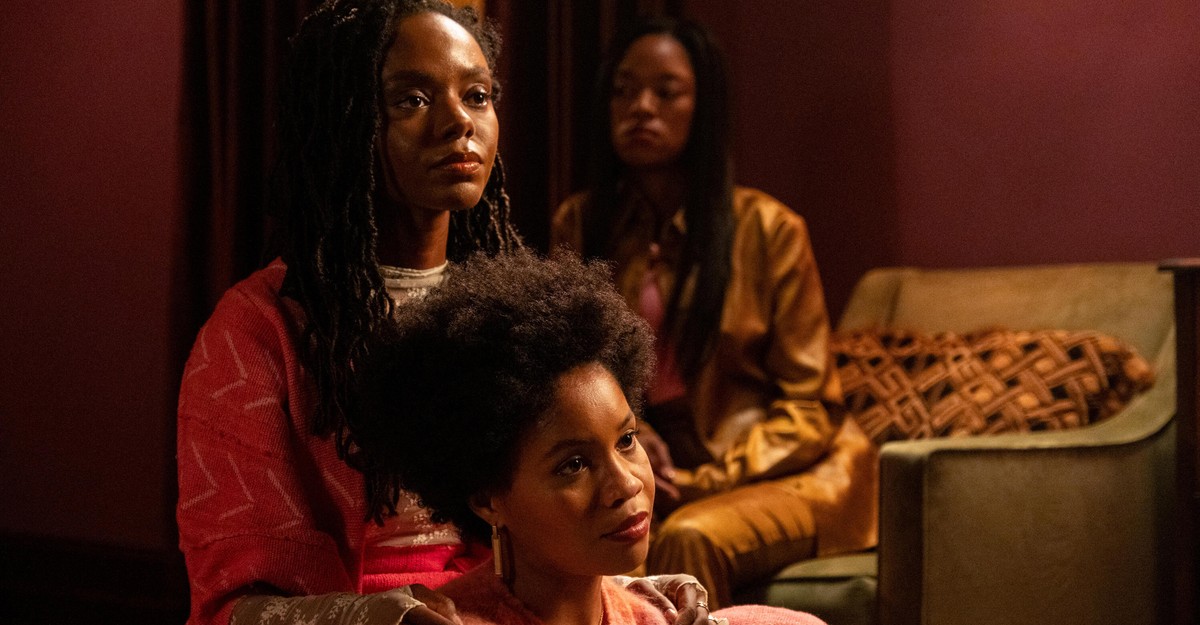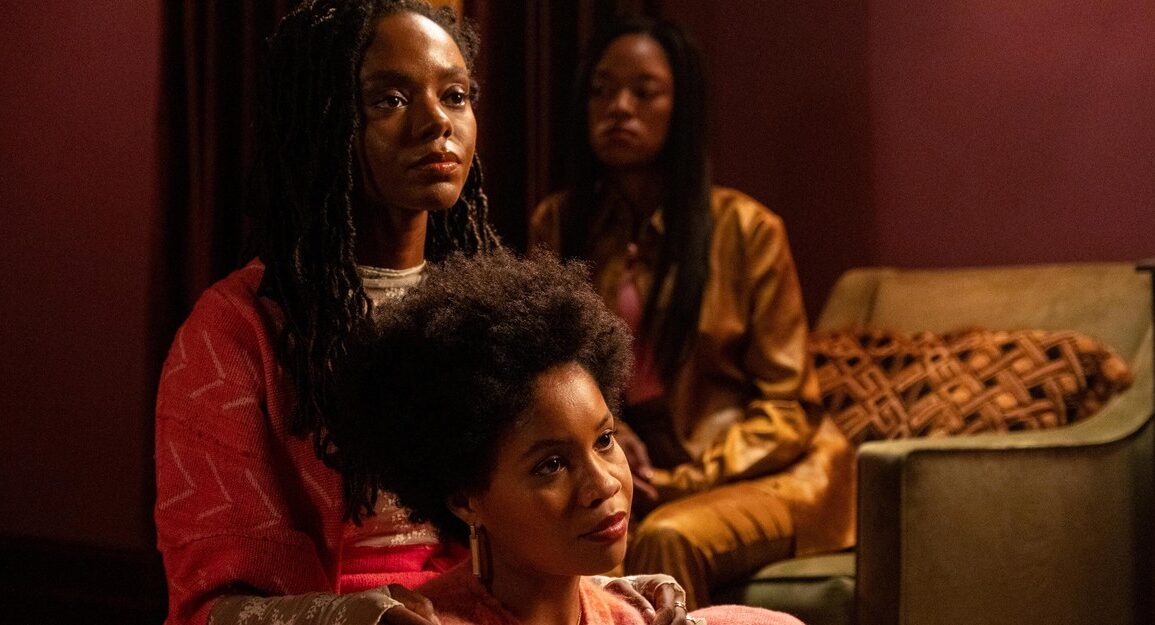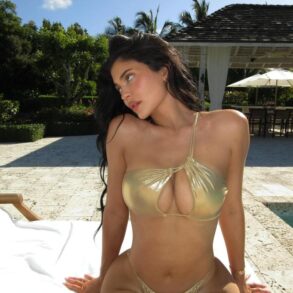
In the 1989 surrealist satire Chameleon Street, two Black men bicker after one says that he prefers women with light skin and “good hair.” After being criticized for the comment, the man makes a self-deprecating joke: “I’m a victim, brotha. I’m a victim of 400 years of conditioning. The Man has programmed my conditioning. Even my conditioning has been conditioned.” Nearly a decade later, the rap duo Black Star would sample the dialogue at the beginning of their song “Brown Skin Lady,” which is framed as a rebuke of this pervasive bias against dark skin and kinkier hair, and an ode to an idealized vision of a head-wrap-donning natural woman whose “skin’s the inspiration for cocoa butter.”
Cocoa butter, a popular component of hair and beauty products targeted at Black women, is an essential ingredient in The Other Black Girl, a new Hulu series based on the 2021 office-novel-slash-surreal-thriller by Zakiya Dalila Harris. The story follows Nella Rogers (played by Sinclair Daniel), a 26-year-old assistant at a New York publishing house where almost all of her co-workers are white. One day, the sweet, muted chocolate scent of cocoa butter wafts toward Nella’s cubicle; she’s soon introduced to her cool new Black colleague, Hazel (Ashleigh Murray), who’s just been hired. But Nella’s initial excitement soon transitions into fear as she realizes that something sinister is hiding beneath Hazel’s head wraps. It turns out that Hazel is a member of a group of young, professional Black women who all use a magical hair grease—one that helps deaden the stresses of corporate racism. Hazel, whom the group calls its “Lead Conditioner,” likens it to “CBD for the soul”; her arrival at Wagner Books is a recruiting mission to force the personality-changing pomade onto Nella, so they can add a future book editor to their ranks.
For more than a century, Black writers (and, later, filmmakers) have been sublimating the worst chapters of American history into horror, science fiction, and other speculative works. These genres afford creators the freedom to embellish, reimagine, and comment on social ills by manipulating fear of real phenomena. In the context of horror, disembodied hair—or the wild hair of an unruly character—can elicit particularly visceral reactions. (There’s a reason that one specific image comes to mind when you think of The Ring.) The fraught history of Black hair in the United States provides no shortage of inspiration—not just the way it’s been legally policed, but also the mind-numbing pain of a scalp burn caused by chemical relaxer left in too long, or the headaches that come with tight braids. Taming Black hair can be a haunting endeavor, and works such as The Other Black Girl have used these real-world anxieties as a launchpad for more fantastical stories.
The Hulu adaptation is one of several recent productions that use elements of horror and speculative fiction to dramatize the liabilities of managing Black hair, especially in the workplace. In They Cloned Tyrone, a sci-fi mystery film released earlier this year, the protagonists discover an underground lab where an Afro-sporting white scientist has been conducting behavioral experiments on Black people. To inure Black women to the injustice around them, the nefarious entity has been adding a mind-controlling substance to the chemical relaxers they use to straighten their hair.
A similar plot device appears in the 2020 film Bad Hair, a horror satire set in 1989 Los Angeles, where a production assistant gives in to corporate pressure to ditch her natural Afro-textured hairstyles and get a long, silky weave. With her palatable new tresses, she finally gets considered for the TV hosting gig she’s been working toward for years, but her luck changes when her weave overpowers her—literally—and sets off a bloodthirsty rampage. Or take the 2018 horror-comedy short Hair Wolf, a modern vampire story set in a Black hair salon. Directed by Mariama Diallo (who also directed two episodes of The Other Black Girl), the film follows a white influencer obsessed with Black cultural signifiers who insists on getting “boxer braids”—and whose leeching presence starts changing the appearance of the salon’s stylists.
Though these genre works vary in tone and skillfulness, they’re all rooted in the same historical reality: For centuries, Black hair has been surveilled, stigmatized, and even banned from public view by laws such as Louisiana’s 18th-century tignon law, which mandated that Creole women of color cover their hair with a scarf “as a visible sign of belonging to the slave class, whether they were enslaved or not.” After the Civil Rights Act of 1964 banned employment discrimination based on race, Black workers began fighting for their right to wear their natural hair without employer retaliation.
Some of these struggles continue today: Because of their hairstyles, Black students have been dismissed from school activities or barred from walking in graduation ceremonies with their classmates; Black job candidates have had employment offers rescinded. At the same time, some social progress has been achieved at the statehouse: Beginning with California in 2019, the CROWN Act (which stands for “Creating a Respectful and Open World for Natural Hair”) and similar bills have been passed in 23 states, making this form of discrimination illegal. Section I of the California law begins with an acknowledgment that the “history of our nation is riddled with laws and societal norms that equated ‘blackness,’ and the associated physical traits, for example, dark skin, kinky and curly hair to a badge of inferiority, sometimes subject to separate and unequal treatment.”
Hulu’s The Other Black Girl immediately introduces hair as a locus of its characters’ private unease (whereas in the novel, the anesthetizing hair serum isn’t introduced until nearly two-thirds of the way through). In its opening scene, a meek-looking Black woman tries to escape an unseen threat at the Wagner Books office in 1988. As she awaits the elevator in a panic, she reaches through her full, mostly straight hair to scratch her scalp. By the time she makes it onto the subway, she’s rubbed her skin raw, and her fingers emerge from her hair covered in blood. This is the work environment that Nella Rogers, with her Afro and her anxiety, will enter 35 years later—the hunting ground where Hazel will attempt to draw Nella into her cocoa-butter coup.
Hazel, whom the white higher-ups at Wagner seem to love as soon as they meet her, doesn’t look quite like the stereotypical “office pet” Black woman of TV shows past. Hazel sports faux dreadlocks, not straight hair of any kind. They’re often piled high atop her head, a wrap holding them in place. Her styling is decidedly modern, vaguely Afrocentric; she projects the sort of effortlessly chic authenticity that Nella, who keeps her hair in a simple Afro, longs for.
The Other Black Girl is at its best when it treats these differences between Nella and Hazel with humor. Nella’s friend, Malaika (Brittany Adebumola), for instance, is a Rihanna-loving style chameleon who judges Nella’s hair and attire with as much vigor as she questions the eerie plot unfolding at Wagner. While Malaika chaperones Nella at a “hair party” in Hazel’s Harlem brownstone, she tries to figure out what’s in the product that Hazel wants to use to braid Nella’s hair. After Hazel declines to answer, Malaika chastises her gullible friend for going along with the plan. “Girl, I taught you better than that,” Malaika says to Nella. “You are on a hair-care journey, and you’re gonna throw it out the window for some unknown ingredients?”
These comic moments recall the witty asides that peppered the show’s influences, most notably Get Out and Scandal. They’re also particularly engaging because the series is pretty light on thriller elements—and because they don’t feel bogged down by explanation. These scenes suggest that the show trusts its viewers to already know that natural hair care usually really is a journey. They reminded me of a bit in the shape-shifting sketch-comedy series Random Acts of Flyness, whose first season featured an episode in which a white judge sentences an anthropomorphic textured wig for offenses including “general badness,” “a tendency to split ends,” and “criminal damage to a perfectly functional plastic comb.” Spoofs like that sketch are especially refreshing because they know how exhausting such conversations about “good hair” can be. The sketch addresses a painful, sometimes dangerous form of discrimination, but the absurdity of its visuals and the confidence of its writing keep it feeling inventive.
The Other Black Girl doesn’t quite succeed at threading its disparate styles into one cohesive series. But the end of the season suggests that a second chapter could land with a little more finesse. In the show’s final scenes, when Nella seems to have acquiesced to the cocoa-butter conspiracy, we see her at Wagner rocking a long, silky black wig. Her co-workers are in awe of the newly minted editor’s empowered disposition, but behind the closed door of her fancy solo office, Nella smirks slyly. She’s in on the secret now, and she’s going to have some fun. What she’ll do as an undercover Conditioner is anybody’s guess.
This post was originally published on this site be sure to check out more of their content.







